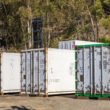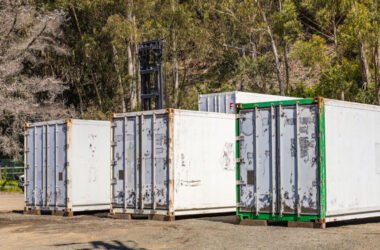Have you ever felt like your business is running out of room? It happens to almost every growing company. The more your business expands, the more space you seem to need. But leasing new property isn’t always the smartest or most affordable move. Rent prices keep climbing, and bigger spaces often come with extra costs that eat into your profits.
The good news is that there are plenty of creative ways to grow without signing another lease. Whether you run a small office, a local shop, or a warehouse, you can make more room for your business by working smarter with what you already have. Let’s talk about how you can expand your business footprint without spending more on rent.
1. Use Modular Storage or Work Units
When your business starts to feel cramped, it’s worth exploring modular options that add space without long-term leases. Shipping containers are one of the most flexible solutions out there. Businesses use them for storage, pop-up offices, and even mobile retail units. They’re strong, secure, and can be delivered right to your site.
Some companies even customize them with windows, insulation, or shelves to create functional workspaces. If this sounds like something your business could use, you can buy shipping containers for sale from trusted local suppliers to expand efficiently. They offer a cost-effective way to add room without construction or high rental costs.
2. Redesign and Repurpose Existing Space
Before looking for a new property, take a close look at how your current space is being used. You might be surprised at how much room goes to waste. A few smart changes can open up valuable square footage. Try moving furniture, using vertical shelving, or rearranging storage layouts to make better use of every corner.
If you have unused areas like hallways or break rooms that are larger than necessary, think about converting part of them into small workstations or storage zones. Sometimes the fix is as simple as removing clutter or reorganizing files. By being intentional with your layout, you can create more usable space without spending anything on rent.
3. Go Hybrid with Work Arrangements
One of the most effective ways to free up space is to rethink how and where your employees work. Many businesses have found success with hybrid or remote work models. By allowing some employees to work from home, you can reduce the number of desks or offices needed on-site.
You can also introduce shared desks or rotating schedules so that the same space serves multiple people throughout the week. Invest in cloud-based tools and communication platforms so everyone can collaborate easily, whether they’re in the office or at home. The key is flexibility. When you combine hybrid work with smart technology, you expand productivity without expanding your square footage.
4. Partner with Nearby Businesses
If your business operates near others, consider building partnerships that benefit both sides. You might be able to share certain spaces or resources instead of leasing new ones. For example, two local shops could share a loading dock, storage area, or event space.
Partnerships like these can lower costs, build community relationships, and create new customer opportunities. You’ll save money while also connecting with other business owners who share your goals. Collaboration can be one of the most practical ways to expand your operations without moving to a bigger location.
5. Leverage Outdoor or Temporary Setups
Outdoor space is often overlooked, but it can be a powerful asset. If you have a parking lot, patio, or open land nearby, use it to set up temporary workstations, seasonal sales booths, or small pop-up areas.
Tents, canopies, or portable prefab units can transform empty ground into productive space. If you run a retail or service business, outdoor setups can attract more walk-in customers and give you extra room to operate during busy seasons. It’s an affordable way to expand without locking into a new lease.
6. Invest in Digital Expansion
Growth doesn’t always have to mean physical expansion. Sometimes, the smartest move is to grow digitally. By improving your online presence, you can reach new audiences and increase revenue without adding physical space.
Consider upgrading your website, investing in e-commerce, or offering virtual consultations. You can also create digital content, such as tutorials or online classes, to serve more customers from your current location. Expanding online helps your business scale while keeping overhead costs low. It’s one of the most cost-effective ways to increase your footprint today.
7. Convert Underused Assets into Functional Areas
Every business has areas that are underused or overlooked. It might be a storage room filled with old equipment or a corner that serves no purpose. Instead of leaving them idle, convert those spaces into something useful.
For example, turn a storage closet into a small photo studio, a meeting nook, or an employee break zone. If you have access to a rooftop or basement, these can become valuable extensions of your workspace. Even small renovations like better lighting, flooring, or paint can make these areas functional. Think of it as a hidden space you already own.
8. Outsource Storage and Logistics
Another smart way to free up room is to let someone else handle your storage. Many companies waste valuable office or retail space storing products, supplies, or documents. By outsourcing storage or using third-party logistics (3PL) providers, you can move that clutter off-site and focus on your core operations.
This approach also gives you flexibility. If your inventory grows, your storage provider can scale up without you needing to lease more space. You get to keep your workspace organized and productive while someone else manages the extra load.
Expanding your business doesn’t have to mean signing a new lease or taking on extra rent. With the right strategies, you can make your existing space work harder for you. Modular setups like shipping containers, smart redesigns, hybrid work models, and digital growth all open new doors for business expansion.
What matters most is creativity and flexibility. When you start seeing your space as adaptable instead of fixed, you’ll realize there are countless ways to grow. Whether it’s using outdoor setups, sharing resources, or outsourcing storage, each small step adds up.









